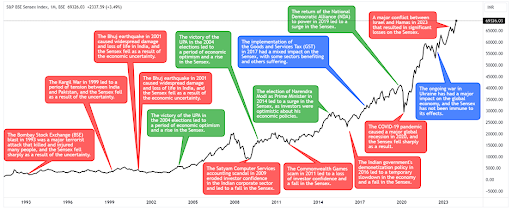
Buckle up, stock market enthusiasts! The Sensex, India’s premier stock index, has just reached a colossal milestone: crossing the 70,000 mark! This is not just a number on a screen; it’s a story of skyrocketing businesses, booming industries, and the collective wealth of a nation soaring to new heights. Get ready for a thrill ride through 15 key events that paved the way for this historic achievement, where we’ll peek behind the curtain of economic triumphs, policy shifts, and moments of sheer market magic that propelled the Sensex to its 70,000 glory!

Here are the details of the 15 mega events of the Sensex:
Disclaimer: This blog has been written exclusively for educational purposes. The securities mentioned are only examples and not recommendations. The information is based on various secondary sources on the internet and is subject to change. Please consult with a financial expert before making investment decisions.
Enjoy Zero Brokerage on Equity Delivery
Join our 2 Cr+ happy customers
Enjoy Zero Brokerage on
Equity Delivery